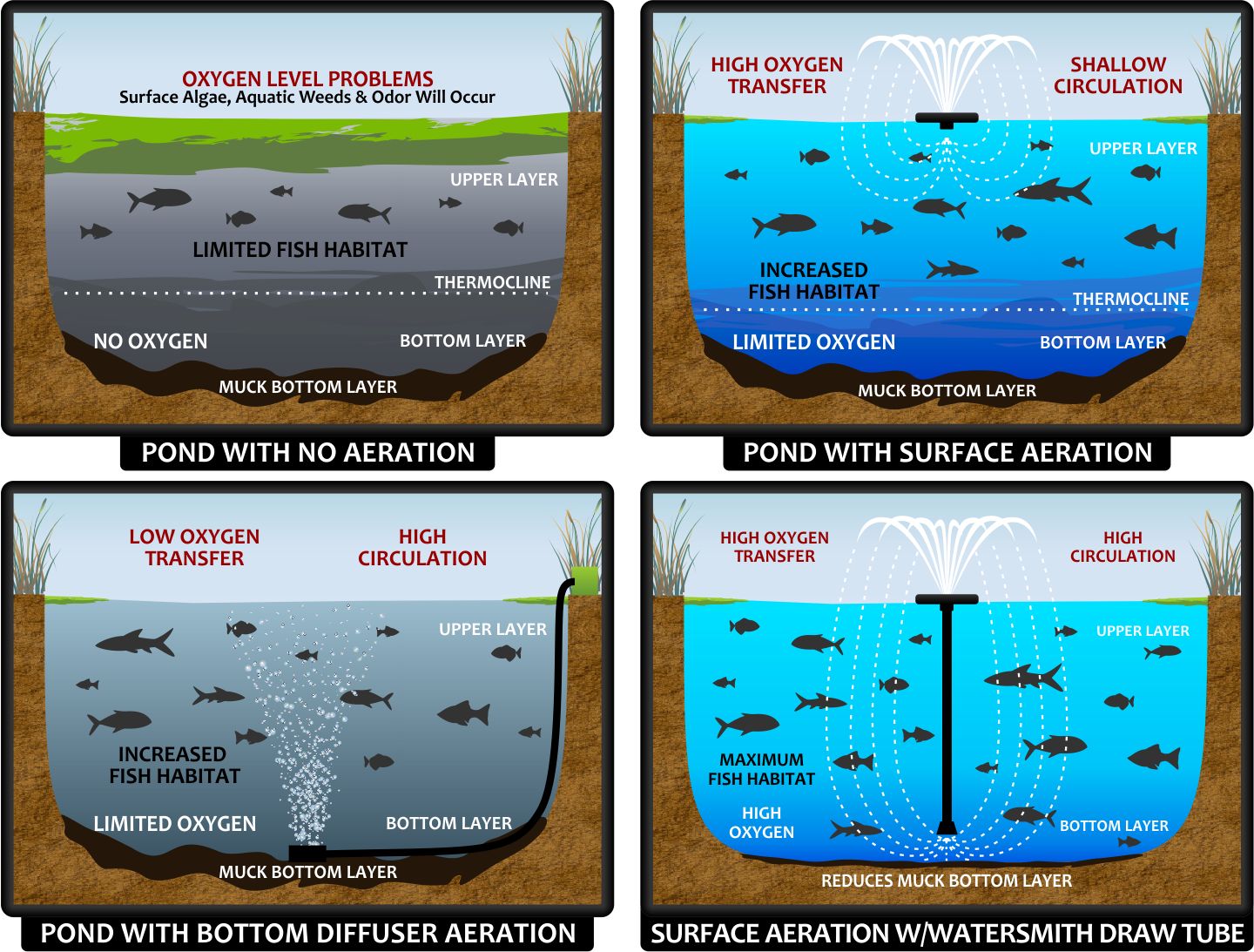Oxygen is crucial for the health of aquatic life in a pond. Proper oxygenation ensures that fish, plants, and other organisms thrive in their habitat. When oxygen levels in a pond drop too low, it can lead to poor water quality, fish kills, and an overall unhealthy ecosystem. In this article, we will discuss effective ways to quickly oxygenate a pond to maintain a balanced and thriving aquatic environment.

Credit: m.youtube.com
1. Aeration Systems
One of the most effective ways to quickly oxygenate a pond is by installing an aeration system. Aeration systems come in various types, including diffused aeration, surface aerators, and fountain aerators. These systems work by agitating the water and increasing the surface area for oxygen exchange, thereby boosting oxygen levels in the pond.
Types Of Aeration Systems:
| System | Description |
|---|---|
| Diffused Aeration | Uses air compressors to pump air through diffuser stones at the bottom of the pond. |
| Surface Aerators | Circulate water and create surface agitation to enhance oxygen transfer. |
| Fountain Aerators | Combine aeration with an aesthetically pleasing water feature. |
2. Oxygenating Plants
Adding oxygenating plants to a pond is another effective method to quickly increase oxygen levels. Plants such as Anacharis, Hornwort, and Waterweed release oxygen during photosynthesis, helping to oxygenate the water. These plants also serve as natural filters, absorbing excess nutrients and helping to maintain water clarity.
3. Waterfalls and Fountains
Waterfalls and fountains not only enhance the beauty of a pond but also help in oxygenation. The movement of water as it cascades down a waterfall or sprays from a fountain increases oxygen levels through aeration. Consider adding a waterfall or fountain feature to your pond to improve oxygen circulation.
4. Proper Feeding Practices
Overfeeding fish can lead to an excess of organic matter in the pond, which can deplete oxygen levels as it decomposes. To prevent this, practice proper feeding habits and avoid overfeeding fish. Feed them small amounts at a time and remove any uneaten food to maintain water quality and oxygen levels.

Credit: fwfarms.com
5. Water Circulation
Ensuring adequate water circulation in a pond is essential for oxygenation. Stagnant water can lead to stratification, where oxygen levels are low in the lower layers of the pond. Use pumps or aerators to create water movement and circulation, preventing stratification and promoting oxygen distribution throughout the pond.
6. Regular Maintenance
Regular maintenance of a pond is key to keeping oxygen levels optimal. Remove debris, excess algae, and decaying matter from the pond to prevent oxygen depletion. Conduct routine water tests to monitor oxygen levels and other water parameters, making adjustments as needed to ensure a healthy pond environment.
7. Emergency Oxygenation Techniques
In cases of sudden oxygen depletion or fish distress, emergency oxygenation techniques can be employed to quickly increase oxygen levels in the pond. These techniques include adding hydrogen peroxide, using oxygen tablets, or running a temporary aeration system to provide immediate relief to the aquatic inhabitants.
Conclusion
Proper oxygenation is essential for the overall health and well-being of a pond ecosystem. By implementing the methods mentioned above, you can quickly oxygenate a pond and create a balanced and thriving aquatic environment. Whether through aeration systems, oxygenating plants, water features, or proper maintenance practices, ensuring adequate oxygen levels will support the vitality of fish, plants, and other organisms in your pond.

